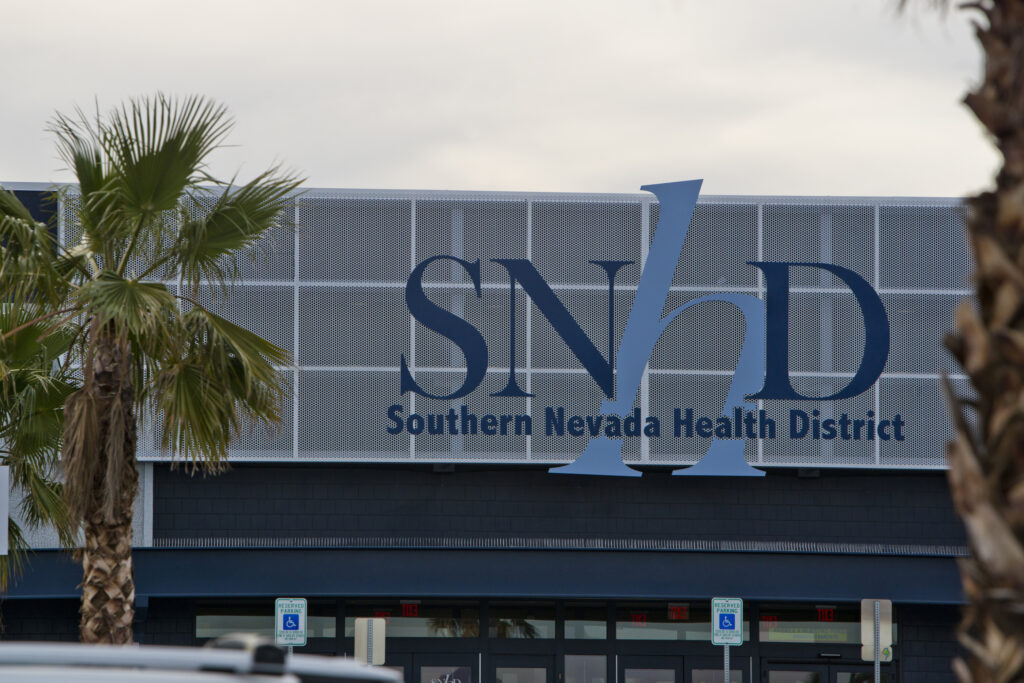Programs to move Southern Nevada septic users to municipal sewer system slowly rolling out

Nearly six months after state lawmakers authorized Southern Nevada Health District to implement a voluntary septic system conversion program to help the drought-plagued region recycle water, the district hasn’t received funding for it, nor has it generated funding of its own.
The district is instead partnering with Southern Nevada Water Authority (SNWA) to implement a program under AB220 that would fully fund conversion of properties on septic systems to the municipal sewer system, allowing the city to capture and recycle water that would otherwise drain into leach fields. In the wake of AB220, SNWA has launched two of its own septic conversion programs and is working on a third.
With just 4 inches of precipitation per year, Las Vegas is the driest metropolitan city in the United States. The city relies on the Colorado River for almost all its water and, as the city’s population has swelled while the river’s flows have decreased, it devised a unique recycling program that captures, treats and returns about 99 percent of water used indoors to nearby Lake Mead. Each gallon returned to the reservoir, known as return flow credits, allows Las Vegas to pump another gallon into the city.
That level of recycling is critical as the Colorado River continues to face extreme water shortages, but Las Vegas can’t capture water that is pumped into septic systems — individual systems that treat wastewater from properties and leach the treated water into the ground. Water pumped into septic systems that eventually filters into leach fields accounts for the region’s third-largest use of unrecyclable water, behind only irrigation and evaporative cooling, according to SNWA.
With several thousand septic systems spread across the Las Vegas Valley, and the average household using 122,000 gallons per year, there are millions of gallons of water the region could be recycling if water that is currently pumped into septic systems was instead pumped into municipal sewers to be treated and returned to Lake Mead.
When SNWA originally proposed AB220, it mandated that thousands of qualifying Clark County septic tank owners connect to the municipal sewer system before 2054. But conversions can cost multiple thousands of dollars, and residents were alarmed by the potential cost.
“I was approached by a large number of constituents saying, “Oh my gosh, oh my gosh, I can’t afford this,” said Sen. Rochelle Nguyen (D-Las Vegas), who said her district is a “hotbed” of properties with septic systems.
The bill that was signed into law in June had less teeth. It outlines multiple water conservation measures regarding turf and water usage, but instead of mandating septic conversions, it authorized agencies to implement voluntary septic conversion programs. It also authorized the health district to implement a voluntary fee of roughly $250 per year for qualifying septic owners who were interested in enrolling in a conversion program, but it did not allocate any funding.
Since the bill’s signing, the water authority has rolled out two programs that fund 85 percent of a conversion and is working on a third program that will fully fund them, while the health district has not rolled out a program of any kind, leading to confusion for residents, Nguyen said.
The two programs SNWA, the wholesale water provider for the greater Clark County region, has already rolled out pay up to 85 percent of costs for residents to convert their systems, using operating funds and Groundwater Management Program funds paid by well users. SNWA is also in the process of rolling out a fully funded conversion program using federal grant funding, which it expects to be online early next year.
“People are contacting the water district about this and they are being directed toward this 85 percent program and they’re like wait, what about this 100 percent program?” Nguyen said.
The health district hasn’t launched a program of its own largely due to a lack of funding, according to Chris Saxton, director of environmental health for the district.
“The main obstacle here is just the money,” he said at the district’s September board meeting. “It’s going to take a long amount of time unless we get a big influx of money from the federal government or somewhere else.”

‘There is still water conservation to be had in Southern Nevada’
Over the past 20 years, 750,000 people have moved to Southern Nevada, increasing its population by 49 percent — 2.2 million residents now call the Las Vegas Valley home.
As the valley grew, the water system advanced faster than the sewer system. There are pockets of the valley that 20 or 30 years ago had water but no sewer hookups. In response, developers added septic systems.
Now, across the valley, about 15,000 residential and commercial properties are still on septic systems. Some pull water from private wells, but about 7,000 of those properties use water from the Colorado River. Combined, those households discharge about 619 million gallons — close to 2 acre-feet of water — into their septic systems each year that cannot be recycled.
“If we’re going to continue to grow, there will be a point where this flattens,” Colby Pellegrino, deputy general manager of resources for SNWA, said of the valley’s ability to recycle water. “But at this time, there is still water conservation to be had in Southern Nevada.”
In septic systems, waste is pumped into a tank where it separates into layers. Commercial companies pump out the sludge and remaining wastewater drains into leach fields, a system of pipes that slowly release the water into the ground. Septic users are generally on lots of a half-acre or larger, due to the space needed for a septic tank and accompanying leach field, and those larger lots often consume more water, Pellegrino said.
The Bureau of Reclamation and the Colorado River Commission of Nevada first agreed to a return flow credit program in 1984 that allows Southern Nevada to pump recycled water into Lake Mead and extract additional water; the process has been updated and changed over the years. The success of the program has allowed Southern Nevada to continue to withdraw water as the Colorado River and its reservoirs have faced declining water levels.
Nevada’s annual allocation of the Colorado River is 300,000 acre-feet — enough water to cover 300,000 football fields with a foot of water. With the ongoing dry conditions, Nevada and other Western water users have seen cuts to their allocation. Next year, the state will see a 7 percent reduction.
Heading into last winter, Colorado River reservoirs had about one year of water stored up before extreme catastrophe, Pellegrino said. The epic winter stopped the proverbial bleeding, but Lake Powell and Lake Mead combined are still at less than 40 percent capacity.


Minimal interest in conversions expressed to health district
The two programs SNWA has already rolled out fund up to $40,000 for conversion costs.
SNWA has received 67 applications from municipal water users and 17 by well water users since launching the programs that provide partial reimbursement and has completed two conversions thus far, Pellegrino said. SNWA has also had hundreds of inquiries about the programs while the health district has had just six, Saxton said at the board of health meeting.
The health district declined multiple requests to speak with The Nevada Independent for this story, but answered some questions through a written statement.
The programs that provide partial reimbursement move quicker than those that will cover the entire cost of conversion that the agency is working to launch, SNWA said. That program will be funded by grants and is likely to roll out early next year; SNWA has received several sizable federal grants toward it, including $3 million from the Environmental Protection Agency, $5 million from the American Rescue Plan Act and $1.75 million from the Bureau of Reclamation.
The program that provides reimbursement for 100 percent of conversion costs will give preference to those in areas with known groundwater quality issues and to clusters of properties in strategic locations.
In September, the board of health voted to enact a voluntary program of its own as authorized in AB220 but to transfer the legwork and any funding to SNWA. While the health district permits and inspects septic systems and maintains records of existing systems in Clark County, it does not have experience overseeing utility work and construction contracts, while SNWA does, according to the district, and its program is meant to augment SNWA’s.
The agencies are working on a memorandum of understanding that outlines how the health district’s funds will be transferred to SNWA and how enrollees in the health district’s program will be vetted to ensure they are eligible for conversion.
The health district has no tentative start date for those who wish to work through their program.
“I wish the health district was being a little more proactive getting their program off the ground because that's what's in AB220, and those parameters are what got talked about the most,” said Assemblyman Howard Watts, (D-Las Vegas). “I appreciate that the water authority is stepping up and using other funding to address septic conversion, but I am a little concerned about confusion among septic owners.”
